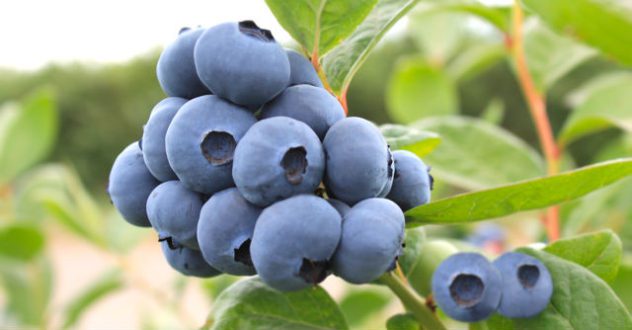Jun 22, 2017Methods to curb phytophthora root rot in northern highbush blueberry
If nitrogen is managed properly, a new study suggests that concerted use of gypsum and wide drip lines can help suppress phytophthora root rot in northern highbush blueberry and increase production in field soils where the pathogen is present.
Phytophthora cinnamomi Rands causes root rot of northern highbush blueberry (Vaccinium corymbosum L.), which decreases plant growth, yield, and profitability for growers. Fungicides are available to suppress the disease, but are prone to development of resistance in target pathogens and cannot be used in certified organic production systems.
In the study, alternative, nonchemical, cultural management strategies were evaluated to reduce phytophthora root rot in a field infested with P. cinnamomi. The field was planted with Draper blueberry, which is highly susceptible to the pathogen. The soil was either amended with gypsum or not before planting, and the plants were irrigated using narrow (adjacent to plant crown) or widely spaced (20 cm on either side of the plant crown) drip lines and mulched with douglas fir sawdust or black, woven geotextile fabric (weed mat). A fungicide control treatment was also included in the study and consisted of applying two conventional fungicides, mefenoxam and fosetyl-Al, to plants irrigated with narrow drip lines and mulched with sawdust.
Initially, root infection by P. cinnamomi was lower with the combination of gypsum, wide drip lines, and sawdust mulch than with any other treatment, except the fungicide control. The soil under weed mat accumulated more heat units than under sawdust and resulted in faster hyphal growth by the pathogen. However, plant growth was similar in both mulch types.
The effects of drip line placement and gypsum, on the other hand, were interactive, and plants grown with a combination of wide drip lines and gypsum produced the greatest amount of biomass among the cultural treatments. Narrow drip lines negated the disease-suppressive effects of gypsum by moving zoospore-inhibiting Ca2+ away from the plant root zone, and also resulted in wetter soil near the crown of the plants, which likely promoted zoospore discharge and root infection. However, wide drip lines resulted in N deficiency symptoms during the first year after planting and, therefore, resulted in less plant growth than the fungicide control.
The study was conducted by John R. Yeo, Department of Crop Science, Oregon State Univesity; Jerry Weiland, USDA ARS, Corvallis, Oregon; Dan M. Sullivan, Department of Crop Science, Oregon State University; and David R. Bryla, Department of Crop Science, Oregon State University.
Access the full study here.
Source: HortScience















